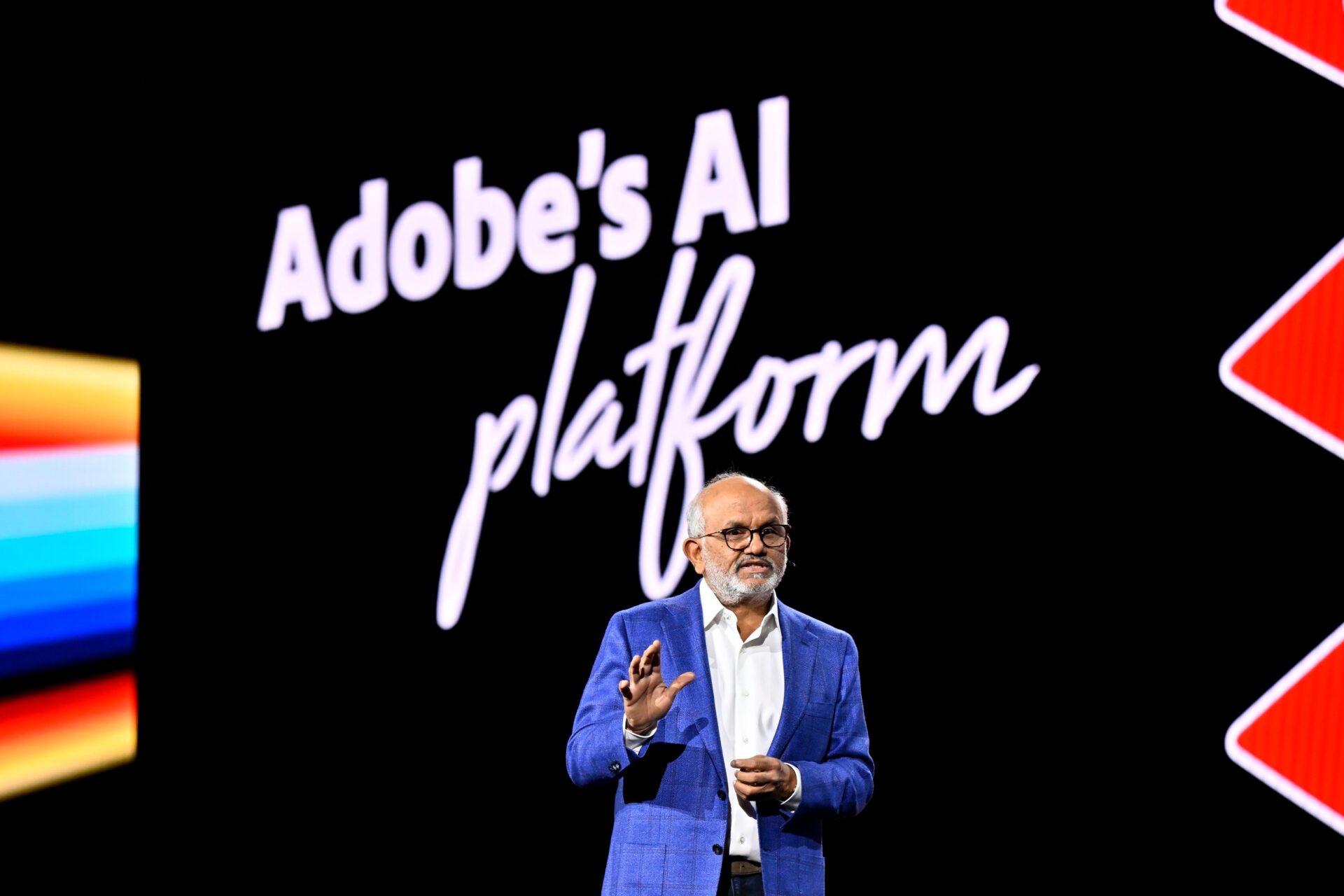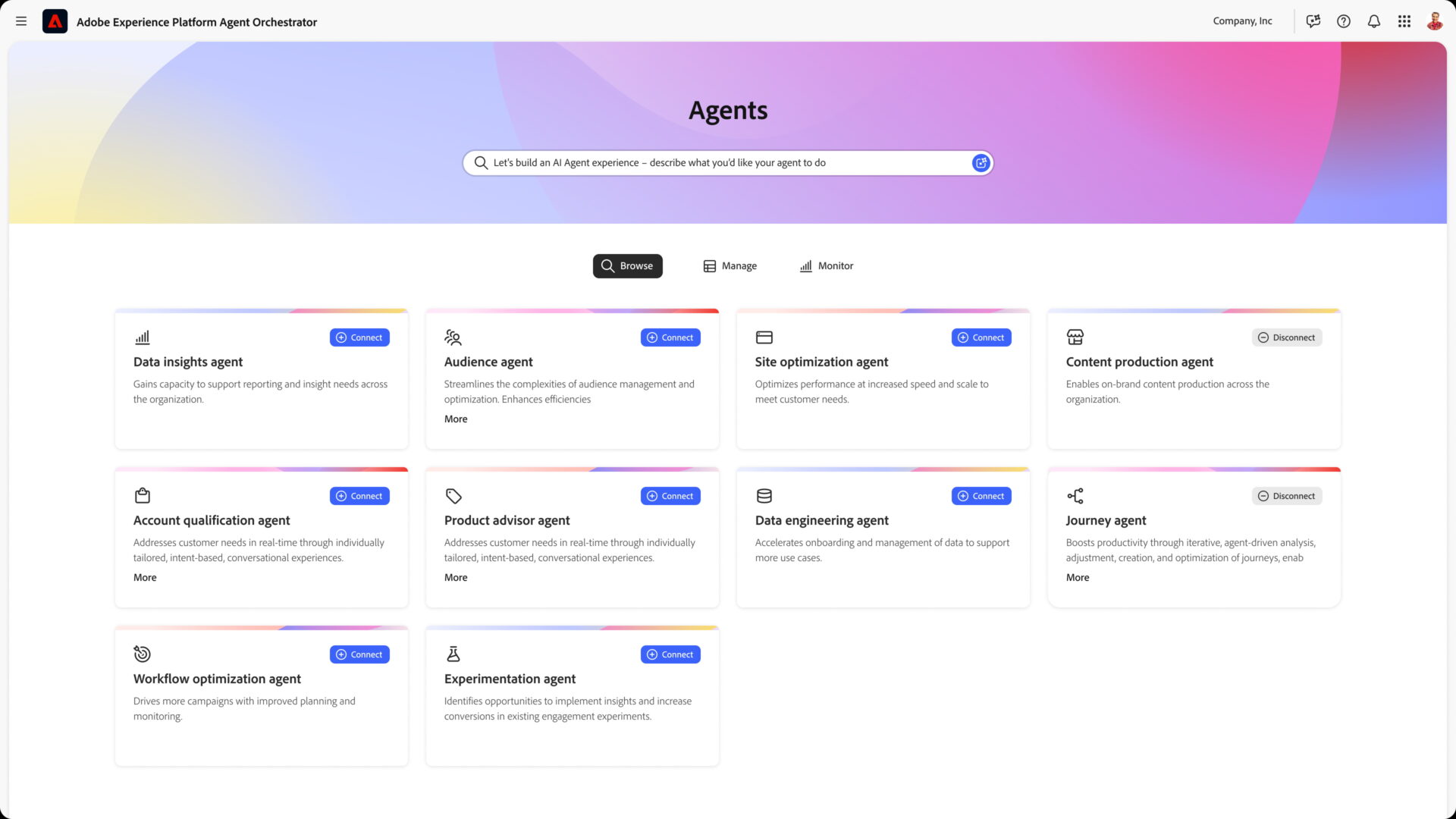
While GenAI continues to dominate headlines, agentic AI is rapidly emerging as the next transformative force. No longer just a buzzword, agentic AI marks a fundamental shift from reactive AI to proactive, autonomous systems capable of perceiving, reasoning, and acting toward defined goals, often with minimal human intervention.
At last week’s Adobe Summit in Las Vegas, the company unveiled its major bet on agentic AI, debuting 10 pre-built AI agents designed to enhance digital marketing productivity and efficiency.
These agents, spanning content production, data insights, data engineering, product advisory, and workflow optimisation, offer capabilities that seamlessly integrate across workflows.
For example, a content production agent pulls from diverse data sources to generate unified, brand content, while a site optimisation agent aggregates cross-functional data to detect and fix website issues, to drive customer engagement.
These AI agents are powered by Adobe Experience Platform Agent Orchestrator, which was announced at the Summit. The Agent Orchestrator enables businesses to build, manage, and orchestrate AI-driven workflows that support employees and engage customers in real-time.

Adobe’s strategic move is significant. By embedding “horizontal” AI capabilities that span marketing workflows, the company is reinforcing its dominance in the digital marketing space.
“Adobe is well-positioned to monetise GenAI across its products due to its massive user base, said Liz Miller, vice-president and principal analyst at Constellation Research on the sidelines for the Summit.
She emphasised that Adobe’s AI agents stand apart from robotic process automation (RPA), which primarily automates repetitive, rule-based tasks like data entry.
Unlike RPA, Adobe’s AI agents are interactive, context-aware, and capable of reasoning. They can interpret intent, solve problems autonomously, and collaborate with humans to make decisions.
Adobe is not alone in this race. Salesforce, SAP, Microsoft, and ServiceNow have all made similar AI-driven announcements in recent months. Research company Gartner predicts that by 2028, 33 per cent of enterprise software applications will integrate agentic AI, up from less than one per cent today.
At the Summit, attended by about 12,000 customers and business partners, Adobe also launched Brand Concierge, a new AI application that creates conversational experiences tailored to individual brand interactions. This AI-driven tool leverages a company’s brand attributes and customer data to personalise engagement.
Beyond marketing, Adobe’s AI innovations extend across its entire portfolio, from Photoshop to Acrobat. Each software app will embed GenAI-powered features to streamline creative and business processes.
Since 2009, Adobe chief executive officer, Shantanu Narayen, has championed a vision to serve marketers with a comprehensive technology stack, effectively shaping the digital marketing landscape.
This vision has led to the development of a platform that empowers customers to harness Adobe’s products, integrating content, data, and customer journeys to elevate customer experience, he said at this year’s Adobe Summit.
In the era of AI, he said the company is even more focused on enabling customers to truly unify creativity, marketing and GenAI, so that customers can deliver those personalised, conversational experiences globally.
Adobe’s AI capabilities are already delivering tangible results for global enterprises. Shashank Sharma, Adobe’s senior director of digital experience for Southeast Asia and Korea, highlighted how Standard Chartered Bank is leveraging these innovations to enhance cross-border banking experiences.
With Adobe’s tools embedded with GenAI, the bank can accelerate content creation, from product updates to marketing campaigns. In one case, Adobe Firefly, its suite of GenAI tools, had helped reduce campaign production time from 25 days to just 16.






